In 1898, tensions between the US and Spain over the remains of Spain's Caribbean empire boiled over after the battleship Maine blew up in Havana Harbor. The US declared war and blockaded Cuba, while the Asiatic Fleet under George Dewey destroyed the Spanish fleet in the Philippines at Manila Bay. The Spanish dispatched a fleet to break the blockade, but it ended up trapped in Santiago on Cuba's south coast in late May, while the Americans began making plans to land an army and take the city.
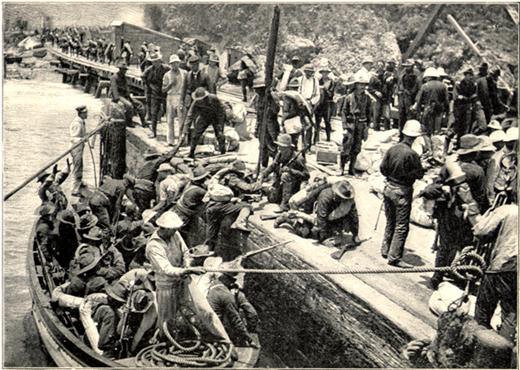
Troops landing at Daiquiri
The Fifth Army Corps had been assembled at Tampa for the invasion of Cuba, and the initial plan had been for it to sail on June 9th. In the days before its departure, several ships on patrol in the waters around Florida spotted what they believed to be heavy Spanish ships. Upon further investigation, these universally turned out to be either American or neutral vessels, but the net result was to delay the sailing of the transports until June 14th. The six-day voyage to Santiago was uneventful, and on June 22nd, the troops began to go ashore at Daiquirí, 12 miles east of Santiago. Fortunately, it was unopposed, or things might have devolved into chaos and failure, as is so common in amphibious operations. Admiral Sampson, commander of the American fleet, didn't have command over the troopships, and many of their captains refused to come close inshore. Worse, they had been loaded haphazardly, and nobody was quite sure where important supplies were. While the boats tasked with bringing troops ashore had a total capacity of 1,800 men, only 6,000 troops were landed between 10 am and 6 pm on the first day.
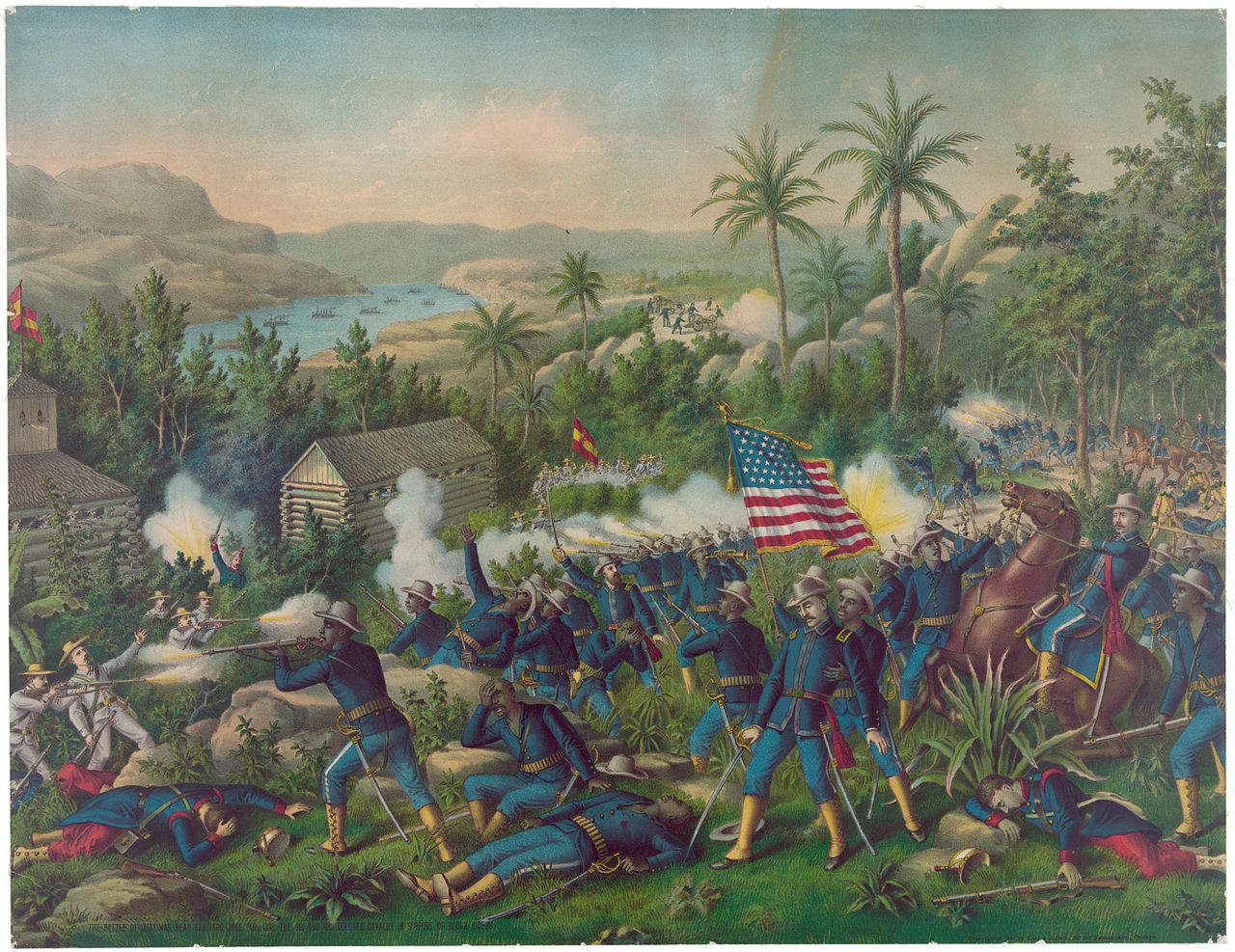
Las Guasimas
The Americans were under orders to avoid contact until the unloading of soldiers and supplies, which took until the 26th, had finished. However, on the 24th a column under former Confederate General "Fighting Joe" Wheeler encountered a Spanish position near Las Guasimas. Wheeler immediately launched a frontal assault, at one point exclaiming "Let's go, boys! We've got the damn Yankees on the run again!" The attack was beaten back, and the Spanish withdrew to the main defenses of Santiago in good order. Wheeler lost 27 men, the Spanish only 7, but the press portrayed it as an American victory.
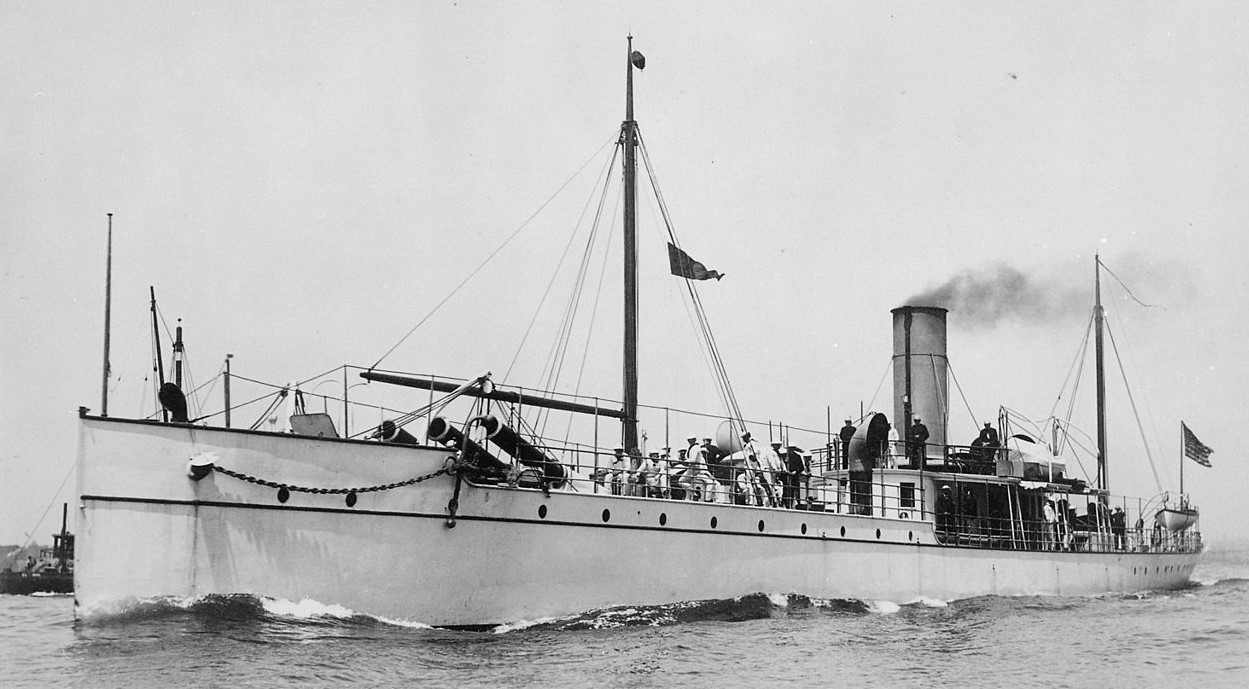
Dynamite cruiser Vesuvius, showing the three 15" dynamite guns.
While all of this was going on, Sampson's fleet kept up a steady series of bombardments of the forts guarding Santiago, aided by the arrival of the "dynamite cruiser" Vesuvius. Vesuvius had been constructed a decade prior to carry a trio of 15" dynamite guns, weapons which used compressed air to throw a very heavy shell loaded with high explosives too volatile to be fired by powder. She was reasonably successful in this role, as her guns fired a large explosive payload quietly enough that the defenders had no warning. Admiral Cervera, leading the Spanish fleet, was coming under great pressure to do something. Many observers, in Spain and elsewhere, completely failed to understand the strength of the blockade or the poor condition of his four cruisers. Colon, the newest of the cruisers, was missing her two 10" heavy guns, while the other three ships, Vizcaya, Infanta Maria Teresa, and Almirante Oquendo each had several guns out of action and about 80% of their 14cm ammunition turned out to be defective. Only a small amount of coal was available, and many of his sailors had been detached to reinforce the landward defenses.
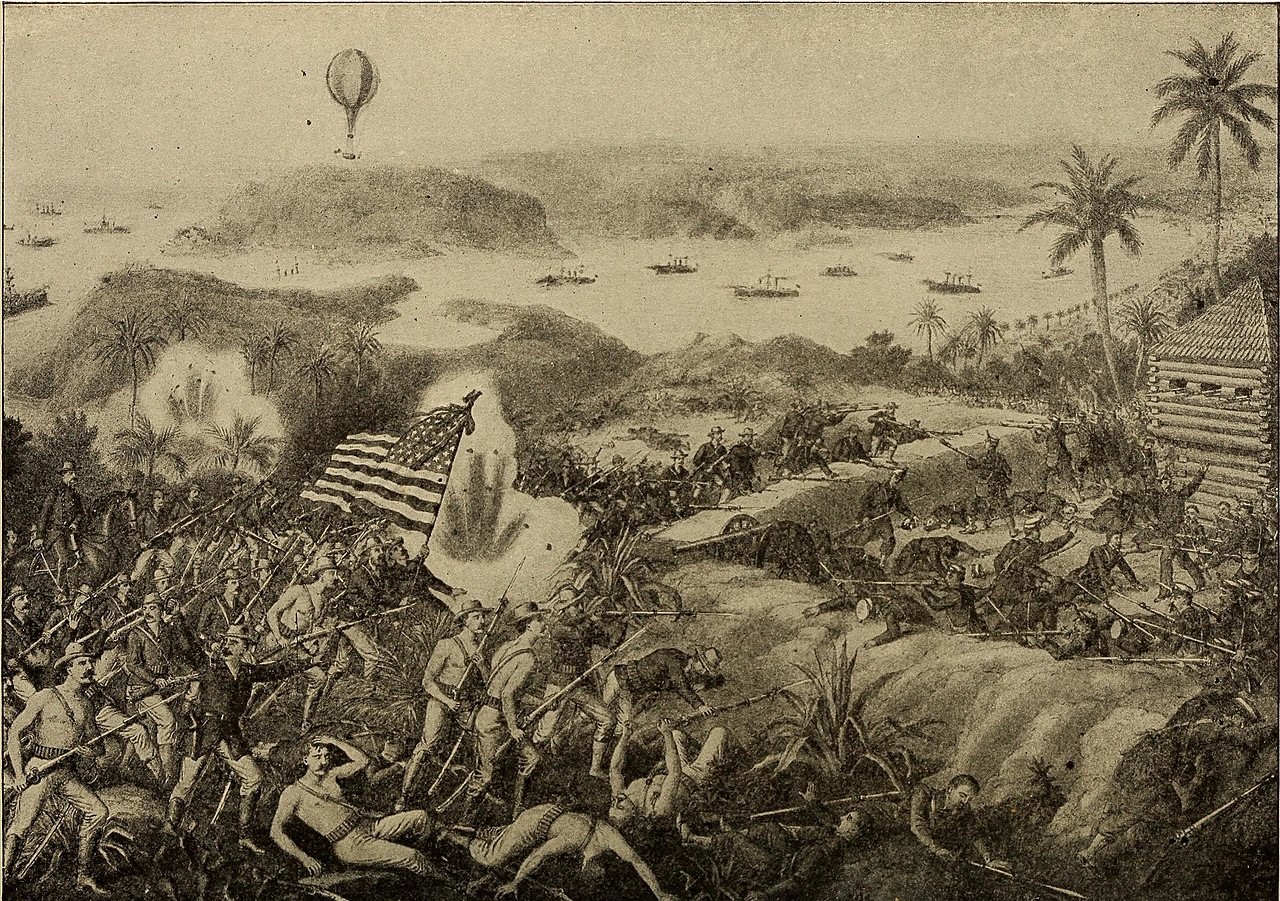
American troops capture El Caney
The troops ashore advanced quickly on Santiago, although cooperation with the fleet remained poor and no attempt was made to capture the forts guarding the mouth of Santiago Bay. On July 1st, American troops attacked the outlying defenses of Santiago, driving the Spanish back, but at a heavy cost.1 The most famous action of the day was the charge of Theodore Roosevelt and his "Rough Riders" up San Juan Hill. This opened the way for them to lay siege to the city.
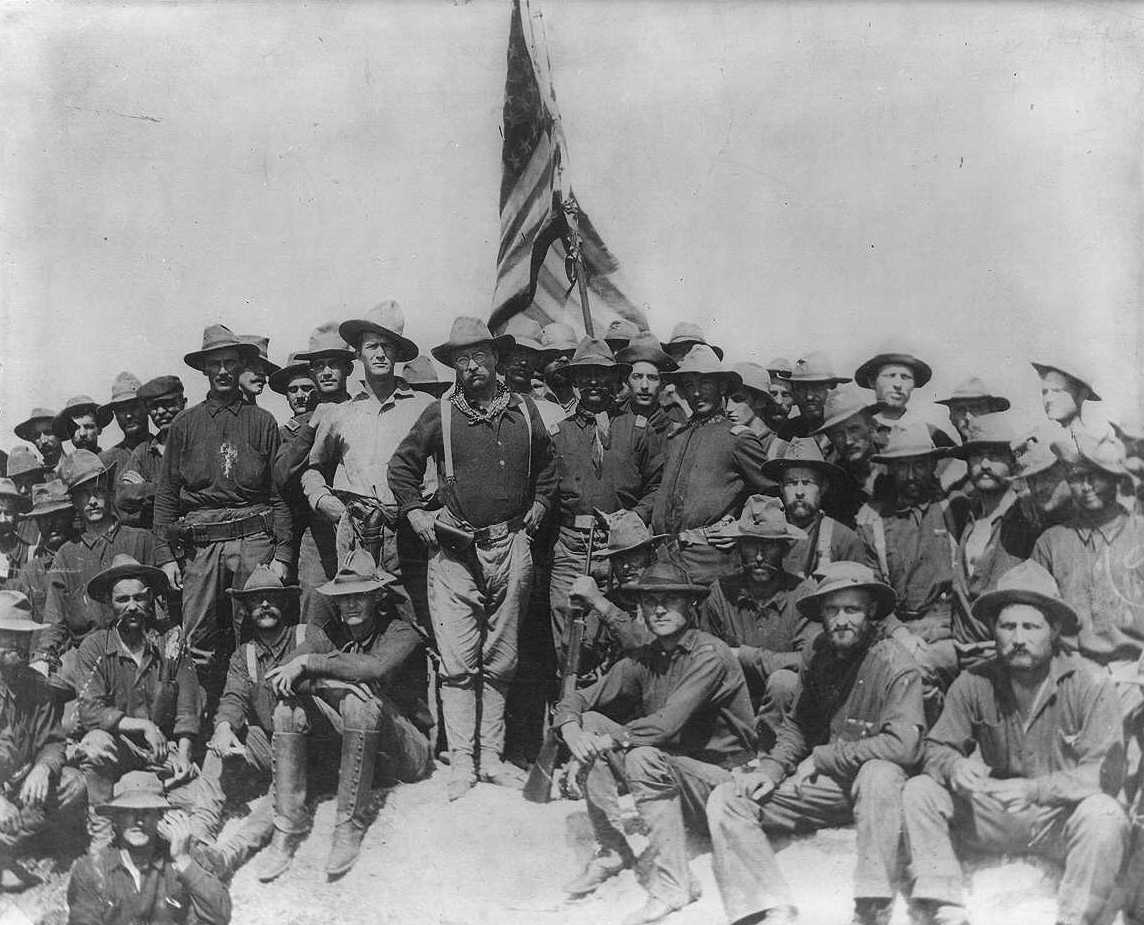
Teddy Roosevelt and the Rough Riders after taking San Juan Hill
This was the last straw for the Spanish leadership, who immediately ordered Cervera to either break through the American blockade or, more likely, die trying. Sampson had seven capital ships2 and made sure to keep at least five on station at all times. Cervera had so far made no attempt to interfere, even when the American ships were anchored a mile or two offshore to keep the harbor entrance under observation at night. His pair of destroyers and the launches from his cruisers could have been used to attack the blockading ships with torpedoes, but no such efforts were made. His one slim chance of success was to get by before the Americans had managed to make enough steam to pursue, as some of their boilers were offline to reduce coal consumption.3 The sortie was set for 0930 on Sunday, July 3rd, in hopes of catching the Americans while they were holding church. We'll pick up the story there next time.
1 About 10% of the American force was killed or wounded during the fighting around Santiago, which is often enough to render a force combat-ineffective. ⇑
2 Battleships Texas, Indiana, Massachusetts, Oregon and Iowa and Armored Cruisers New York and Brooklyn. ⇑
3 Coal-burning boilers can take hours to bring up. By early July, New York was keeping three of her six boilers online, with another banked and the last two cold. This would give Cervera a significant advantage over American ships that were nominally faster. ⇑

Comments
Is that a hot air balloon in the background of the El Caney picture?
Looks like it.
Observation balloons have been used by various militaries since the end of the 18th c.
It is a balloon, the only one used by the Army in Cuba. More details here.
Huh?
Maybe I have the period wrong, but wouldn't control (or destruction) of the outer forts and agressive mine laying (IJN style) basically win the war then and there?